Cyanotype
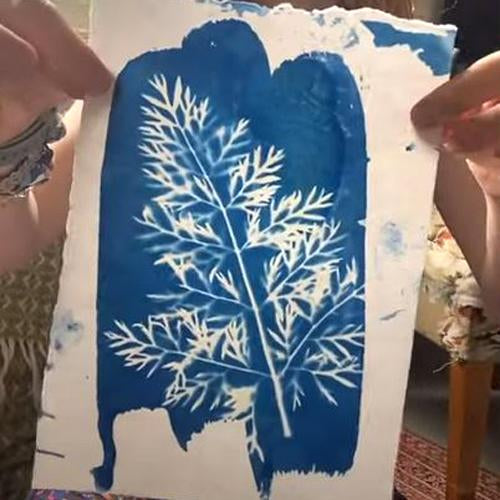
Cyanotypes (sometimes called blueprints or photograms) are made using a really old process that uses light to create designs on fabric and paper. Scroll to the bottom of the page to watch a video on the process or read on.
We are going to need a cyanotype kit. The kit contains two bottles, each with powder in the bottom. Fill each bottle with water to make two separate solutions (we mix them just before using). It’s best to add water to the bottles and shake them to mix 24 hours (or longer) before you’re wanting to start your project.
You can make cyanotypes on fabrics or paper – experiment with different surfaces. Once the cyanotypes are made they will be fixed and washable.
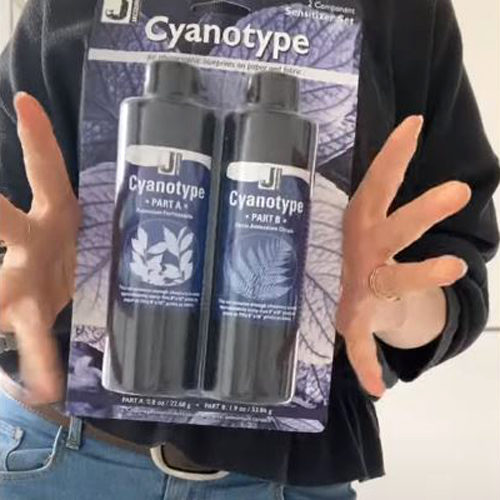
When you’re ready to make your cyanotypes it’s time to mix the two solutions together. Work in a space with very subdued lighting if possible. There’s no need to mix the whole amount together at once: it’s better if you only mix what you need as the life of the mixed solution is only a couple of hours. Mix the two solutions together in equal quantities.
Paint the mixed solution onto your fabrics or papers and leave them to dry in a completely dry space – a closed cupboard or box works well. The mixture will stain so be sure to lay down a protective surface first.
Whilst they are drying, gather together the items you’re going to use as masks. Leaves and plants work well. Objects with a distinctive shape or flat base are best. You may need to pin the lighter items down or place everything under a sheet of glass if it’s windy outside.
After an hour or so, the fabrics and paper should be dry. Make sure to cover them up whilst moving them outside. Placing them between two trays works well.
One at a time, lay the fabrics and papers out and place the objects on top. Pin down on place a sheet of glass to hold everything still. It’s important that nothing moves whilst they’re exposing. The timings for the cyanotypes will depend upon the light levels on the day. The cyanotype solution will start to turn from green to blue and then bronze. Cyanotypes will be paler if they’re under-exposed.
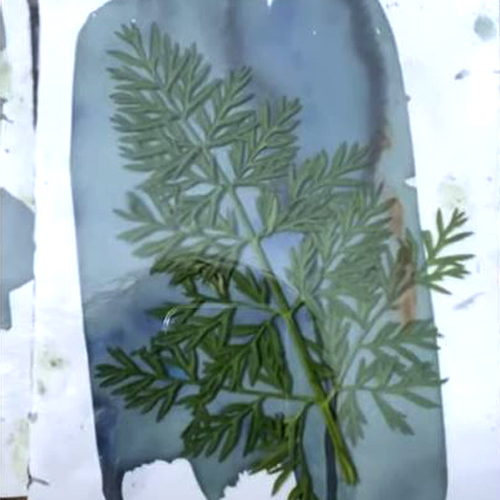
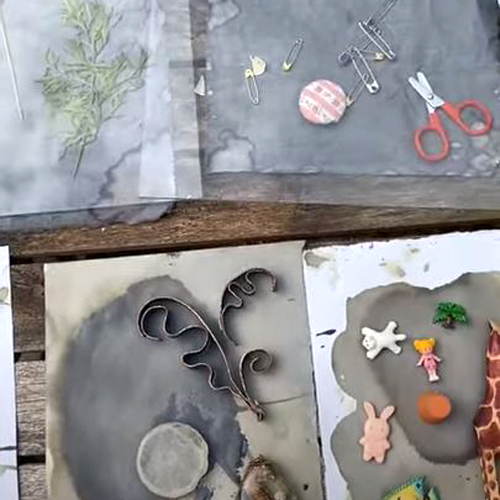
When they have finished exposing, remove the objects on top and immediately place them into a dark space again (back between the trays if using). Rinse the cyanotypes in cold water until the water runs clear. Keep them in a bowl of cold water for about five minutes.
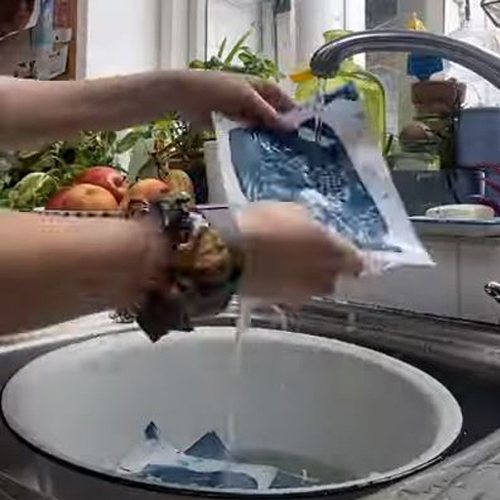
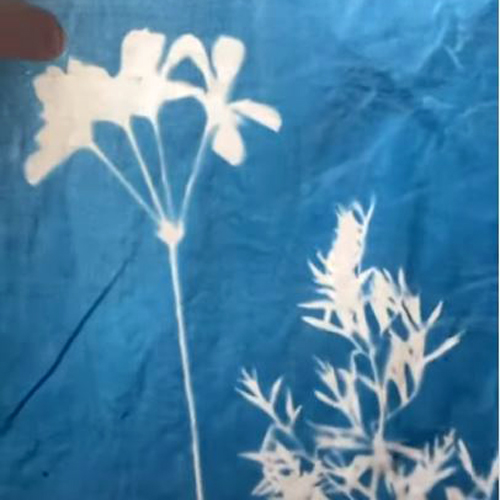
For this project you will need:
- Cyanotype Kit
- A container to mix the solutions into
- Paintbrushes
- Fabrics and papers
- A dark space
- Something to carry the dried fabrics and papers in (e.g. an opaque black bag or two trays to put them between)
- Objects to use as masks
- Sunlight (a bright day is best)
- Cold running water and a large bowl
